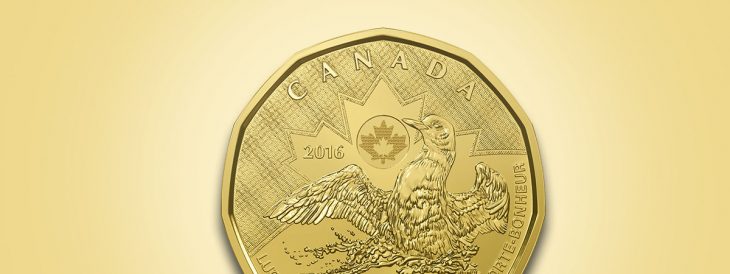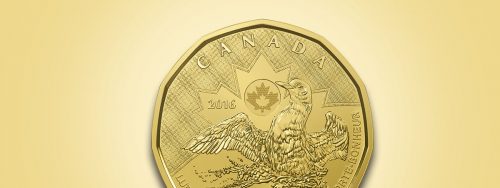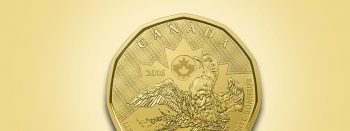Last updated on May 2nd, 2024 at 03:37 pm
Last Updated on May 2, 2024 Posted by Colonial Acres Coins
The Lucky Loonie is today one of the best-known symbols of Canada and it fares right up there with the maple leaf, maple syrup, great outdoors, hockey and numerous other things that make Canada so well-known around the world. However, few people are aware of how it was that the Loonie became part of Canadian lore.
The Royal Canadian Mint produces the Loonie at its facility in Winnipeg. It is essentially a simple, gold-coloured Canadian one dollar coin introduced back in 1987. The reason for its name is the fact that it has the image of a common loon – a well-known and common bird in Canada – on the reverse. The obverse, on the other hand, is where you’ll find an image of Queen Elizabeth II.
Symbolic of the Canadian dollar, the rate at which the loonie is trading against other currencies can often be heard to be discussed by the media. It has, indeed, obtained such popularity; the Royal Canadian Mint even secured the rights to it back in 2006 because of how widely recognized it had become. Another testament to the phenomenon that is the loonie is the fact that the Canadian two-dollar coin, which was introduced back in 1996, was nicknamed the “toonie” – a portmanteau of “two” and “loonie.”
But, when and where did the Lucky Loonie phenomenon originate? Well, it all started back in 2002. The 2002 Salt Lake Winter Olympics officials invited Dan Craig, the National Hockey League’s ice making consultant, to oversee the location where the ice hockey tournament was being held – the city’s E Center arena. Among his companions was Trent Evans, who secretly placed a loonie at centre ice.
The reason for that was because he had realized there was no target at centre ice for referees to aim for when dropping the puck during faceoff. The loonie had remained faintly visible buried in the ice to a handful of people who knew where to look for it.
Evans only told a few people of the coin’s existence and location. Subsequently, both the men’s and women’s hockey teams went on to win gold medals; eventually, the coin was dug up and given to Wayne Gretzky, who revealed the existence of the “lucky loonie” to the world in a post-game press conference.
From then on, Canadian lore was richer by one more symbol of luck. The Hockey Hall of Fame was the lucky recipient of the original lucky loonie, and several subsequent international competitions saw Canadians hiding loonies as well. As a matter of fact, the facilities built for the 2010 Winter Olympics in Vancouver also have loonies buried in the foundation. Ultimately, the Royal Canadian Mint capitalized on the tradition and has released a commemorative edition “lucky loonie” for each Olympic Games since 2004.




